BeiHai Park
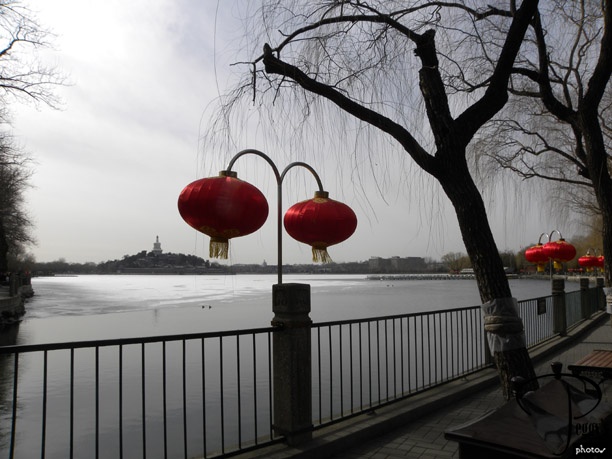
Today was a free day. There was to be an optional tour to the Ming Tombs. However, I was the only one wanting to go, so we didn’t go. They aren’t supposed to be terribly interesting. So Leng, Saieu, and I took off in a taxi to BeiHai Park. Entrance fee to the park was 5 yuan (75 cents) each.

BeiHai Park
BeiHai Park
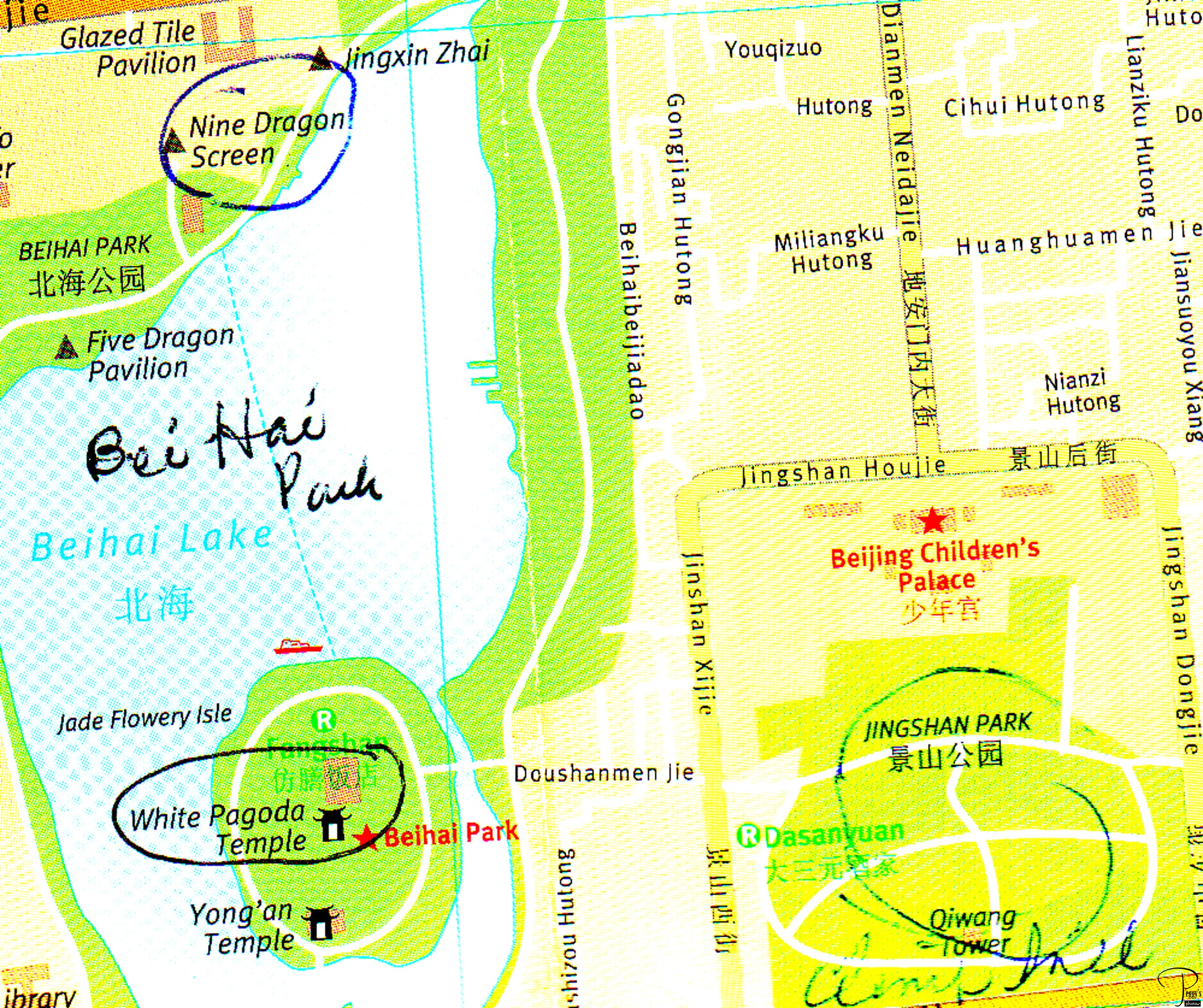
Map of BeiHai Park and Jingshan Park. Jingshan Park is directly north of the Forbidden City.

BeiHai Park
BeiHai Park

Another view of BeiHai Park. Too big a lake and too cold and too windy to walk around the whole lake. We went in search of the Nine Dragon Screen. The White Dagoda is on top of the hill at the back of the photo. We walked first to the right from where we were, then backtracked and walked to the White Dagoda.

BeiHai Park
BeiHai Park
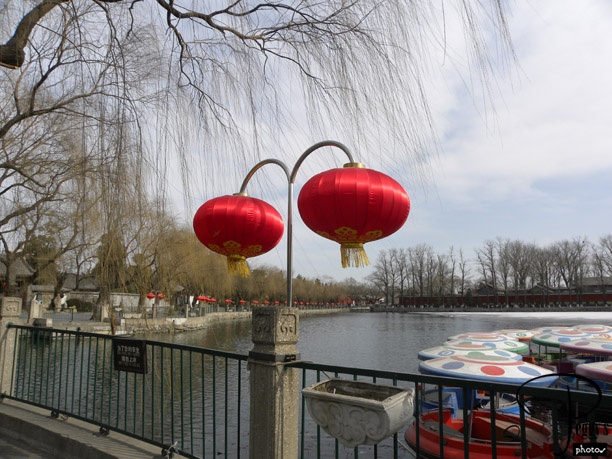
Boats can be rented here during warmer months. BenHai Park served an imperial garden for more than 1,000 years. It was opened to the public in 1925. Kublai Khan (1215–1294), the grandson of Genghis Khan, redesigned the gardens during the Mongol Yuan Dynasty. At its southern end, today stands the Communist Party Headquarters, not open to the public.

BeiHai Park
BeiHai Park
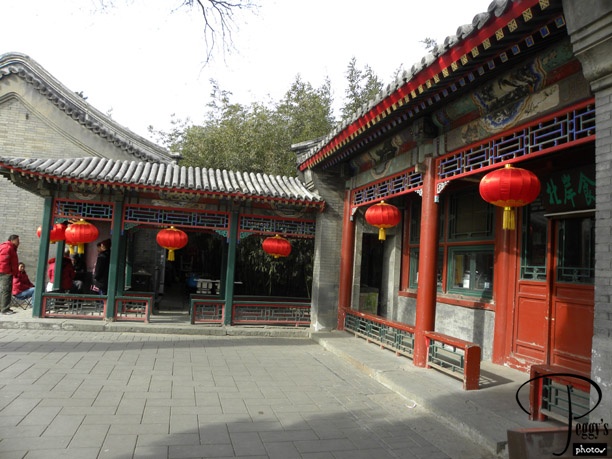
A snack stand.

BeiHai Park
BeiHai Park
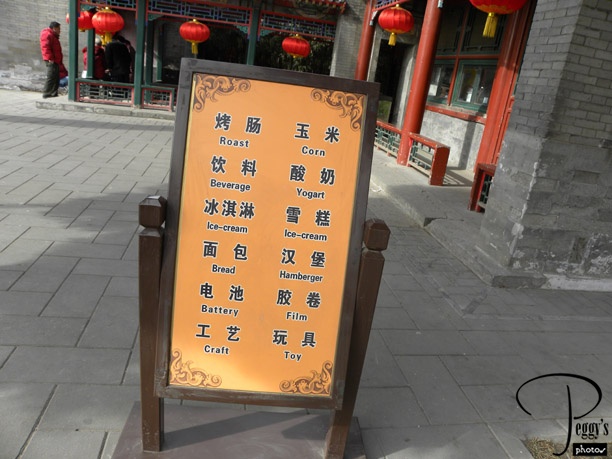
Its menu.

BeiHai Park
BeiHai Park
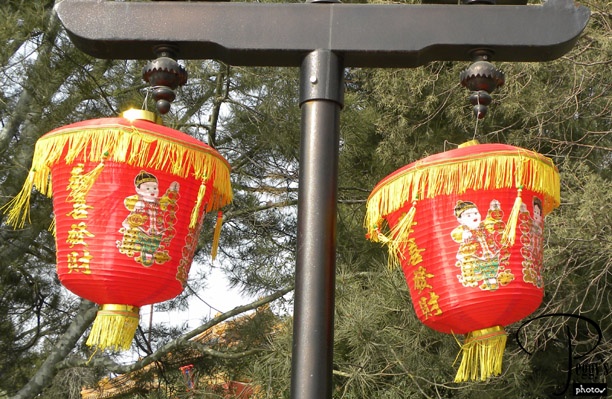
Chinese lanterns hung for Chinese New Year’s.

BeiHai Park
BeiHai Park
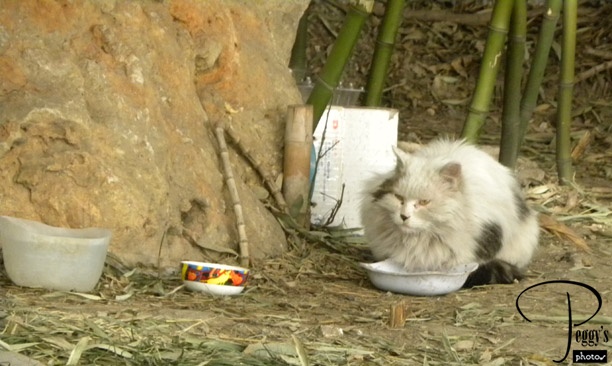
A number of very furry cats are being fed here by some very caring Chinese people.

BeiHai Park
BeiHai Park
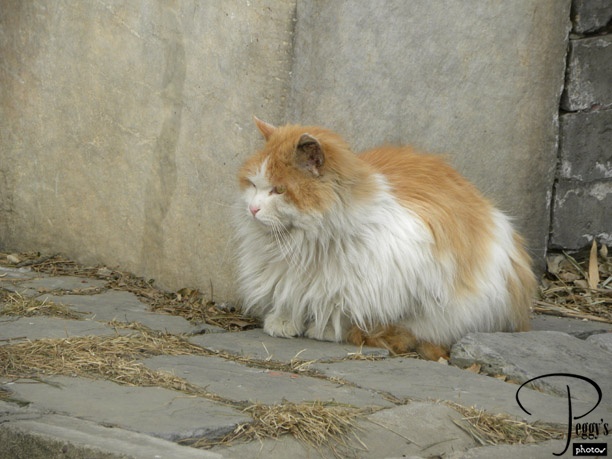
Another furry friend.

BeiHai Park
BeiHai Park
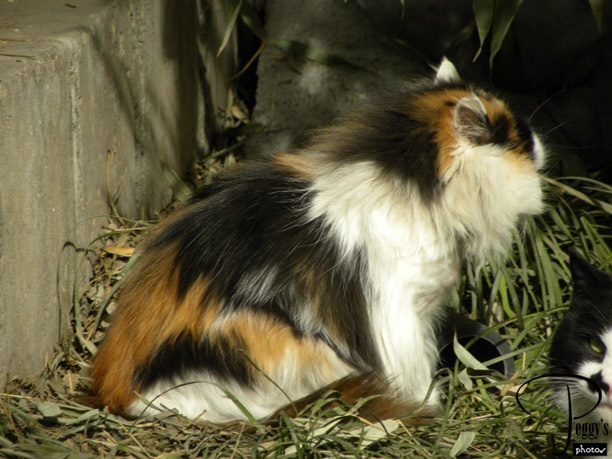
And one with beautiful coloring.

BeiHai Park
BeiHai Park
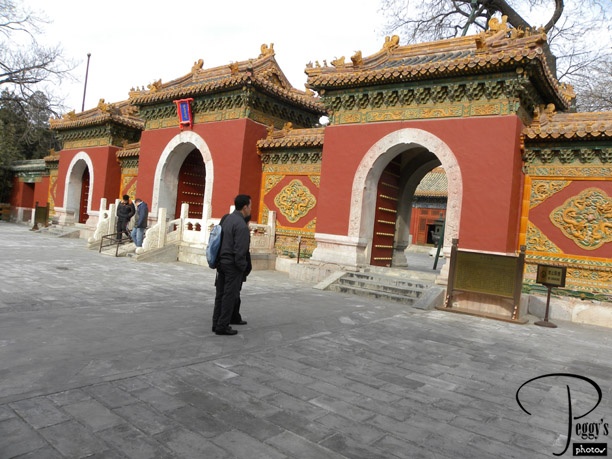
We came across this temple. I was using a travel book as my guide to the park. It didn’t mention much of what there was to see in the park, so seeing this temple was a surprise. It’s the Heavenly King Hall, originally the place where Buddhist scriptures were translated and printed. In 1759, it became a complex of temples. (If you plan to visit BeiHai Park, look it up on the Internet before you go to find out what else is in the park.)

BeiHai Park
BeiHai Park

Through the gate. That’s Leng and Saieu in the photo. Not only did we feel that we had made a great discovery seeing this temple, we also had the temple all to ourselves (the whole park was pretty empty). Wow.

BeiHai Park
BeiHai Park
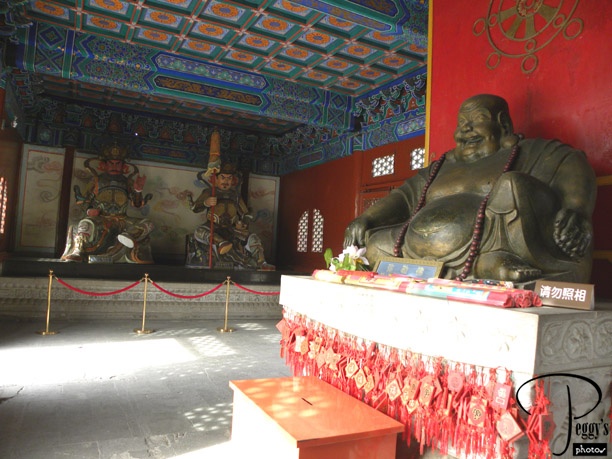
Inside the temple building. No guard, no other people, and no sign saying do not take photos. I clicked two photos very quickly. I felt guilty taking them if they weren’t allowed. Photo: The Laughing Buddha, the Buddha we are most familiar with.

BeiHai Park
BeiHai Park
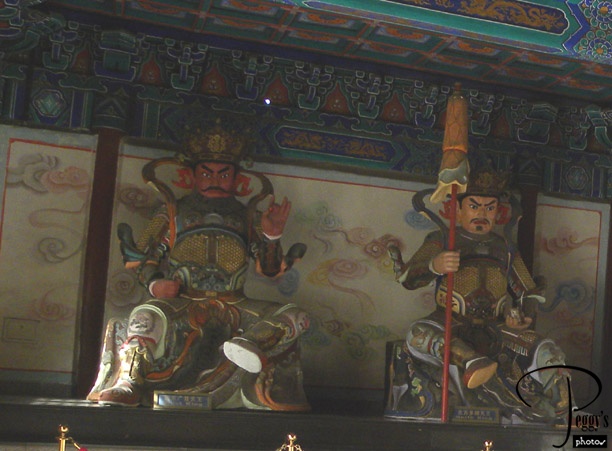
Close–up of the figures to the left.

BeiHai Park
BeiHai Park
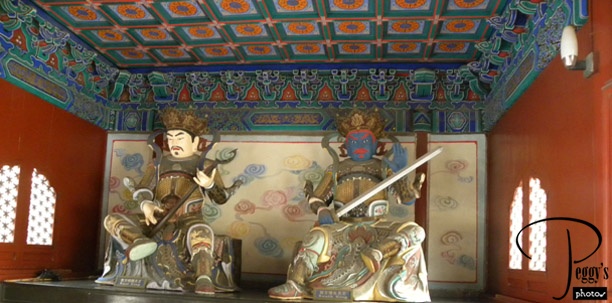
Figures to the right.

BeiHai Park
BeiHai Park
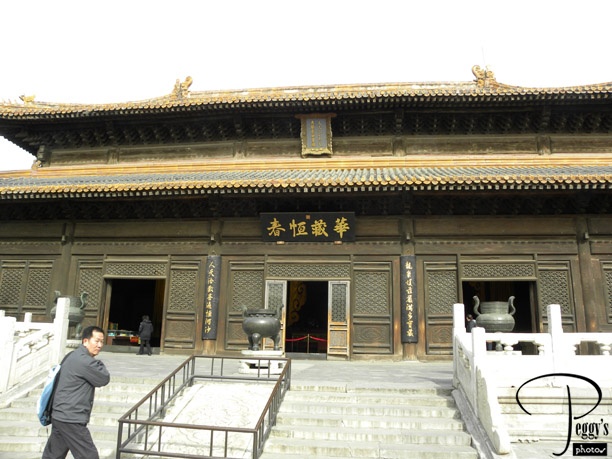
Another temple building behind the first one.

BeiHai Park
BeiHai Park
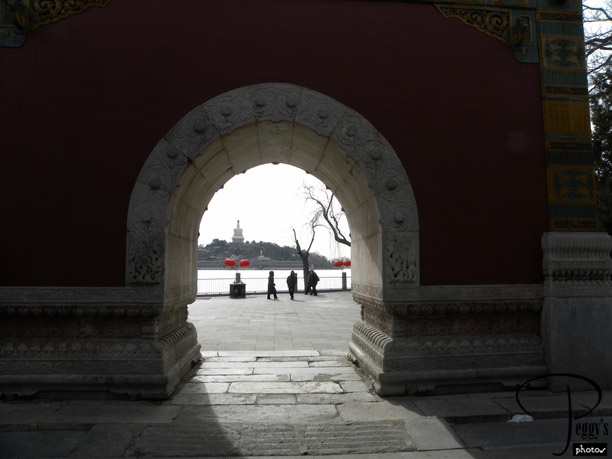
On our way out of the temple grounds.

BeiHai Park
BeiHai Park
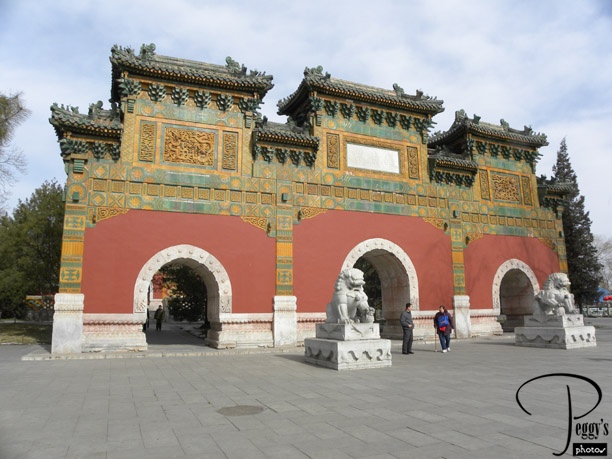
We came out through this gate––not the gate we came in through. Very beautiful.

BeiHai Park
BeiHai Park
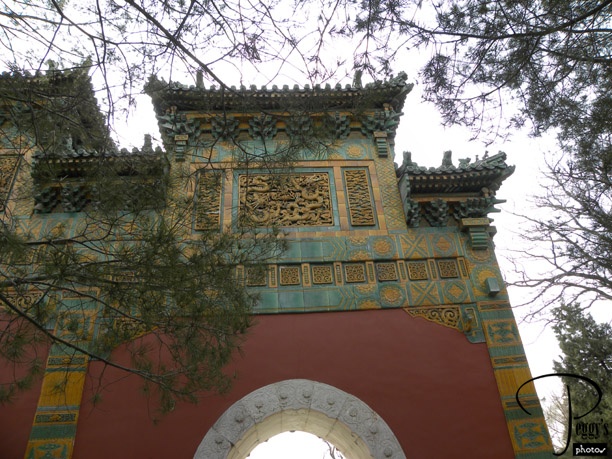
Close–up.

BeiHai Park
BeiHai Park
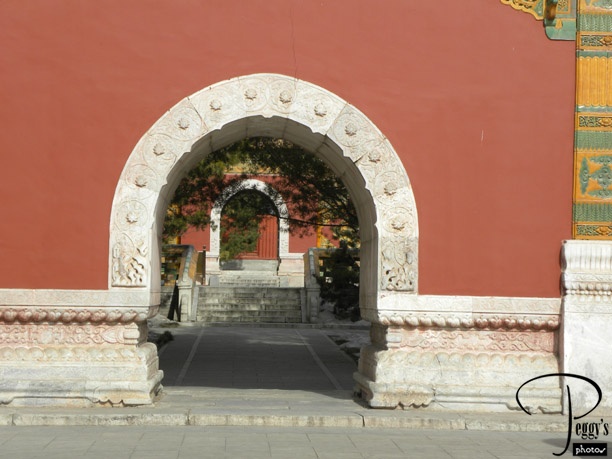
There is usually something framed in China, through an arch, a doorway, a window, etc.

BeiHai Park
BeiHai Park
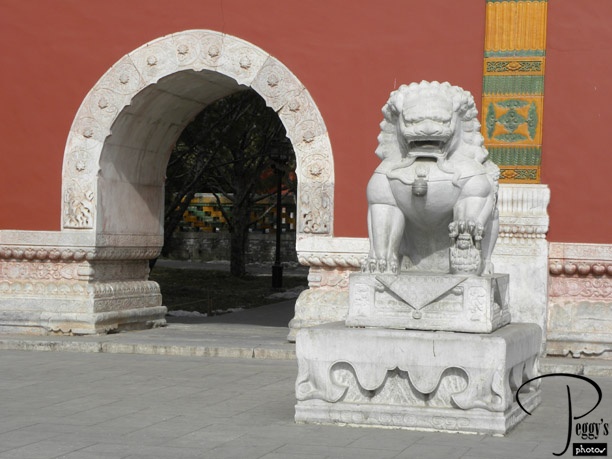
The female lion.

BeiHai Park
BeiHai Park
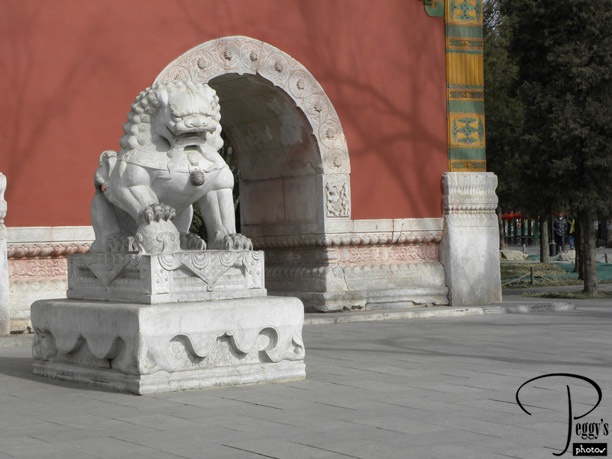
The male lion.

BeiHai Park
BeiHai Park
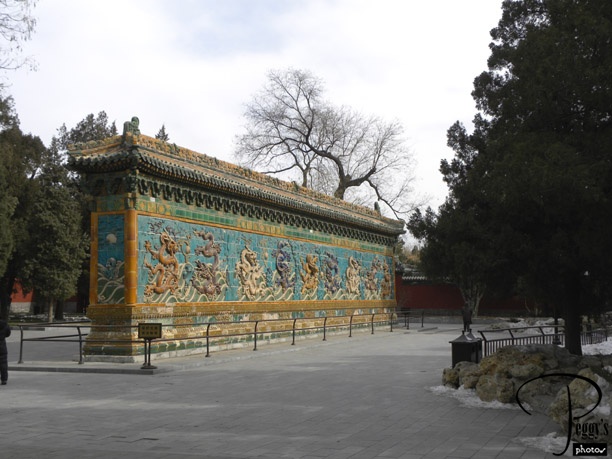
We found the 89–foot long Nine Dragon Screen. There are only three such screens in China, one being in the Forbidden City. We didn’t see that one.

BeiHai Park
BeiHai Par
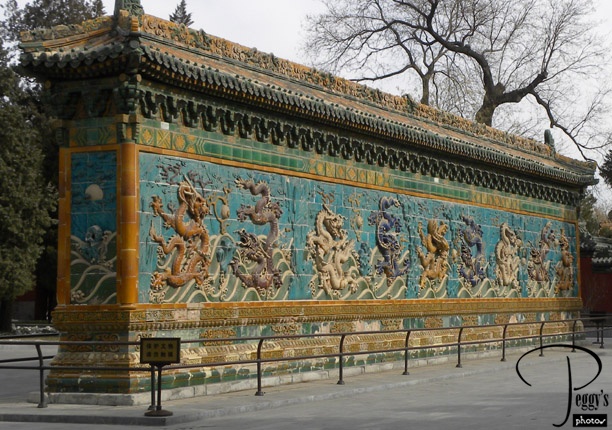
Close–up of the screen. The other side of it is identical to this side. There are nine dragons on each side, of five different colors: “The digit 9 is the highest value digit and is associated with heaven and the emperor. The power of the dragon also symbolizes the emperor.”

BeiHai Par
BeiHai Park
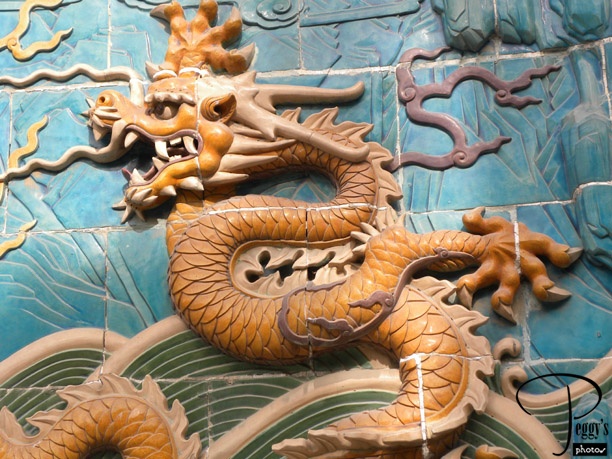
Dragon #1.

BeiHai Park
BeiHai Park
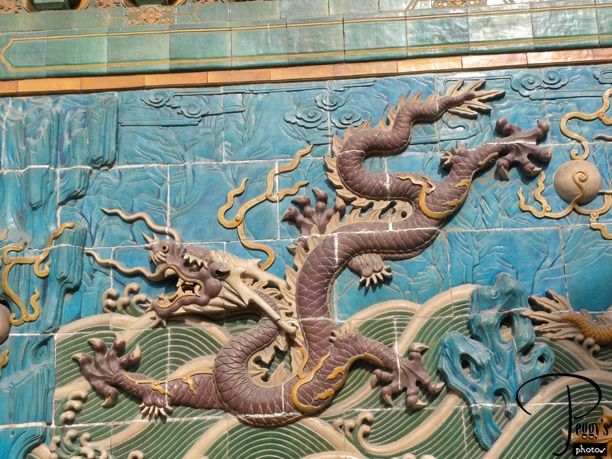
Dragon #2.

BeiHai Park
BeiHai Park
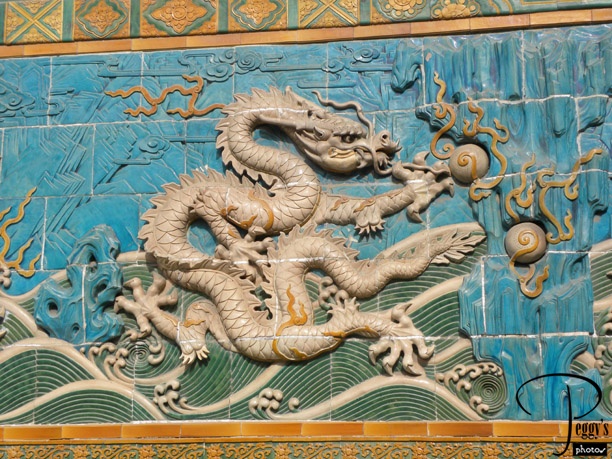
Dragon #3.

BeiHai Park
BeiHai Park
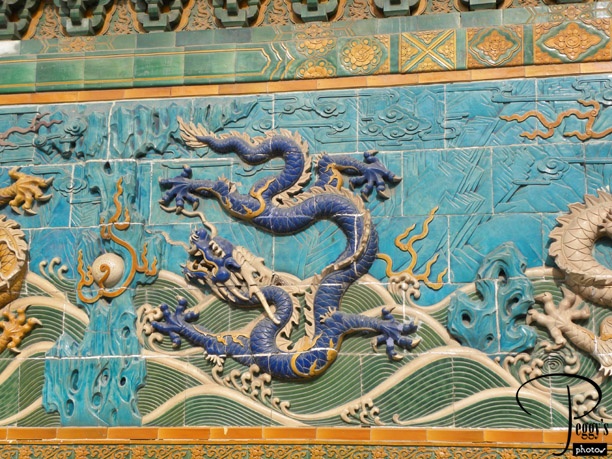
Dragon #4.

BeiHai Park
BeiHai Park
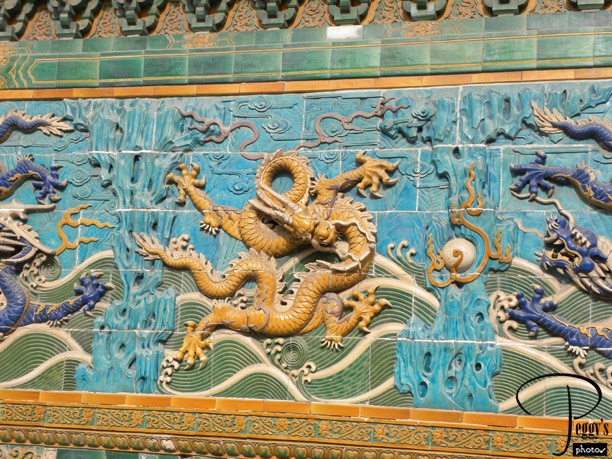
Dragon #5.

BeiHai Park
BeiHai Park
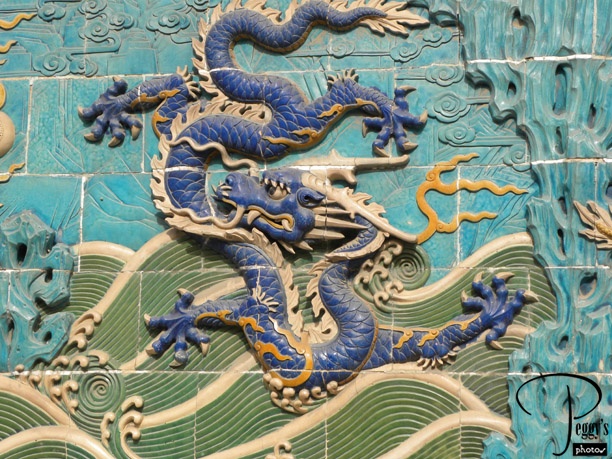
Dragon #6.

BeiHai Park
BeiHai Park
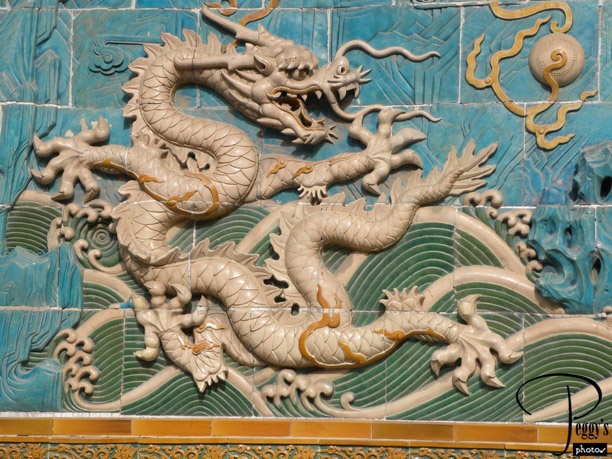
Dragon #7.

BeiHai Park
BeiHai Park
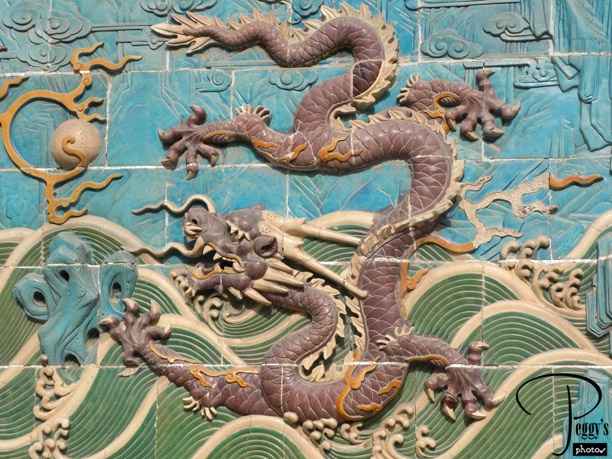
Dragon #8.

BeiHai Park
BeiHai Park

Dragon #9.

BeiHai Park
BeiHai Park
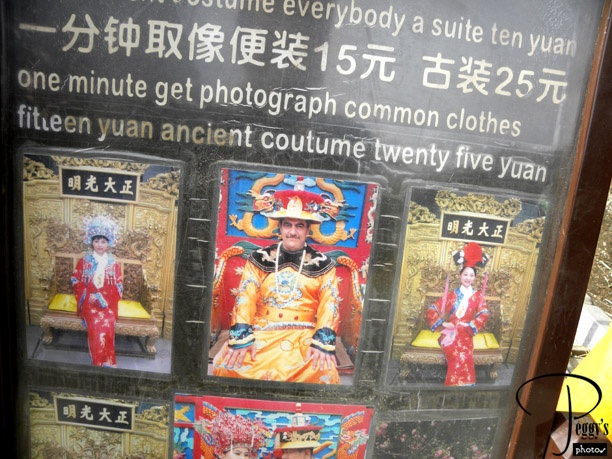
Near the Nine Dragon Screen, you can get your photo taken: 15 yuan ($2.25) in your common clothes or 25 yuan ($2.75) in an ancient costume.

BeiHai Park
BeiHai Park
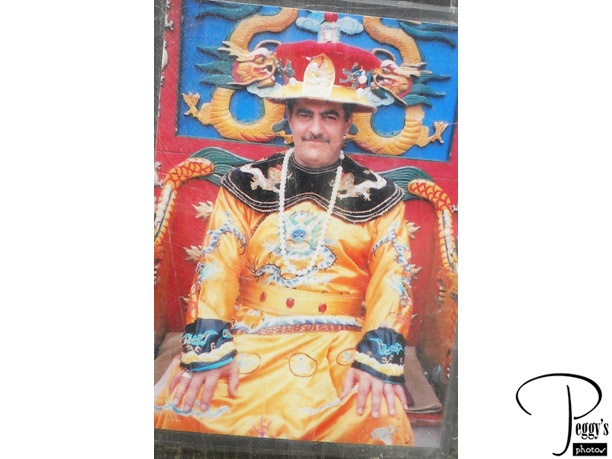
I think his photo came out very nice.

BeiHai Park
BeiHai Park
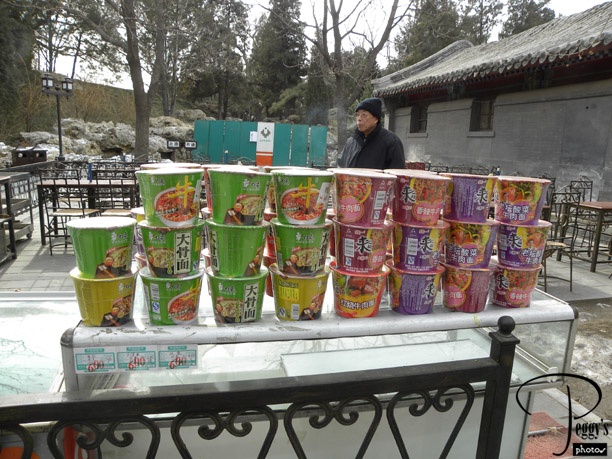
It’s cold outside. You can often see vendors selling these noodle meals and also similar cups that you or the vendors pour hot water in the make coffee, tea, and hot chocolate. I bought some for hot chocolate and coffee to use in my hotel room as there was a hot water thermos to heat up but no coffee, etc.

BeiHai Park
BeiHai Park
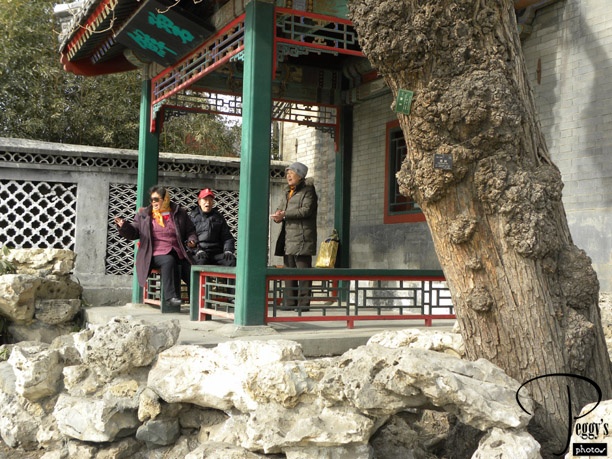
We passed these singing ladies and gentleman. I took a movie of them: Go to Movies, Asia, China, “BeiHai Park Singers, Beijing.” These are not street performers. They just meet in the park, take along a boom box, and sing, sing, sing. Put them in a U.S. park and they might be arrested for disturbing the peace or fined for performing without a permit. I thought they were delightful.

BeiHai Park
BeiHai Park
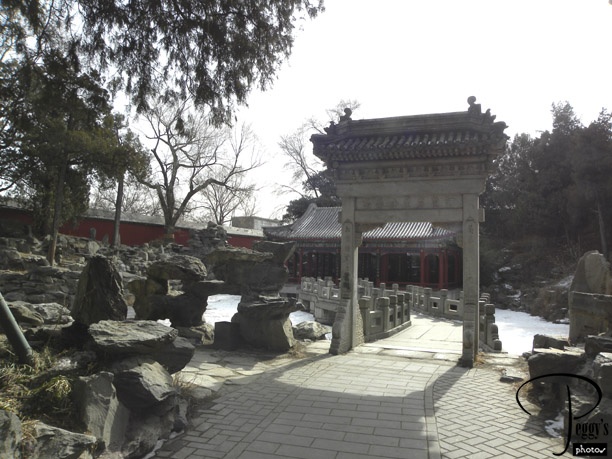
We took a path off the park circle and came upon HaoPuJian, a pavilion. This area must be beautiful in the warm months.

BeiHai Park
BeiHai Park
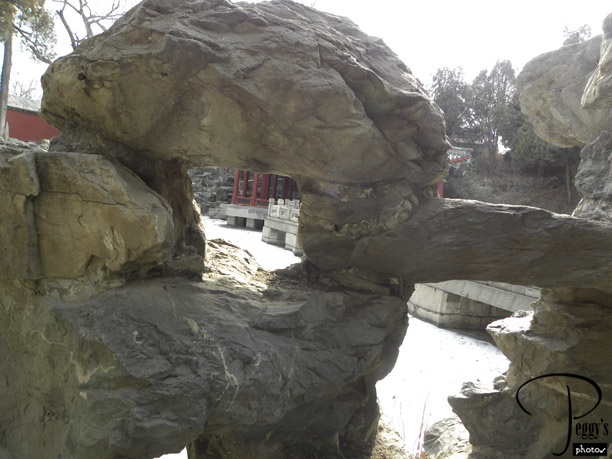
Looking through holes in the rock.

BeiHai Park
BeiHai Park
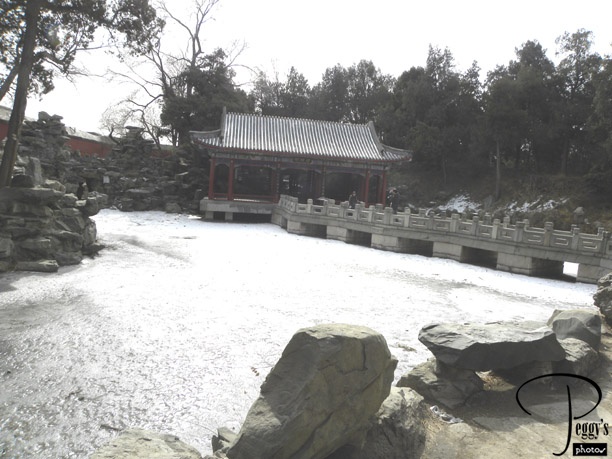
The frozen pond.

BeiHai Park
BeiHai Park
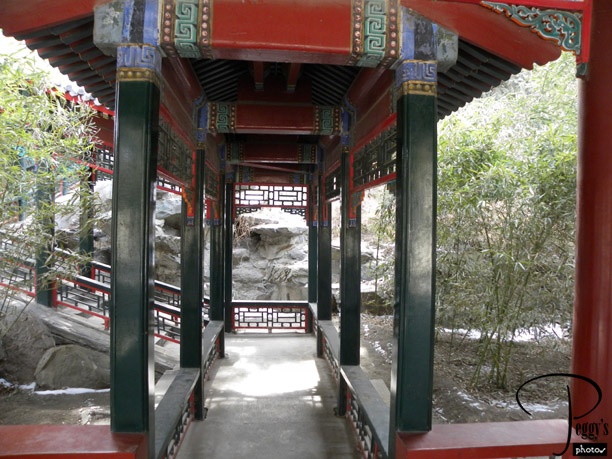
The corridor.

BeiHai Park
BeiHai Park
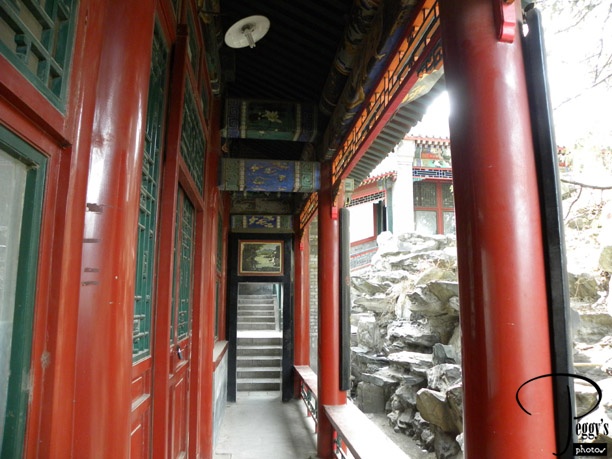
Farther along the corridor.

BeiHai Park
BeiHai Park
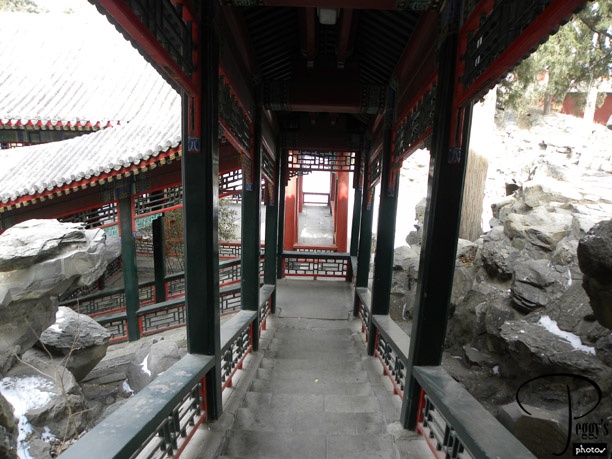
Looking downward.

BeiHai Park
BeiHai Park
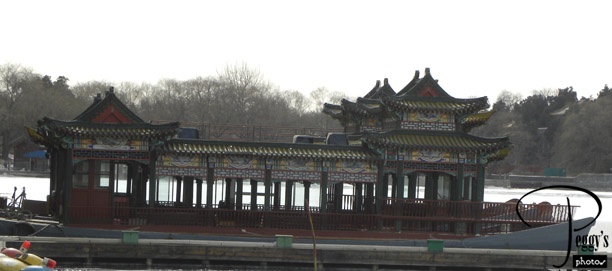
A boat you can take a ride in around the lake when the lake isn’t frozen.

BeiHai Park
BeiHai Park
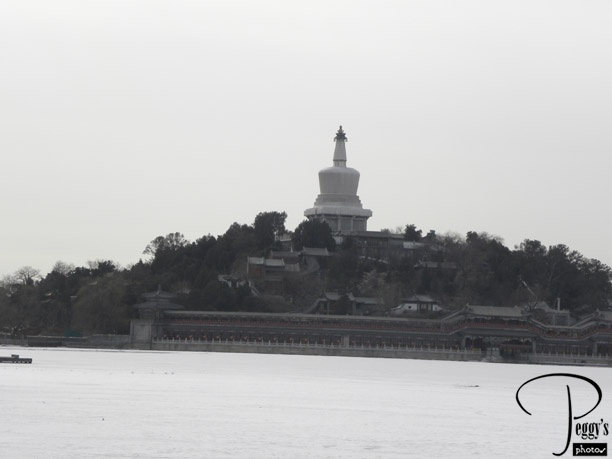
We are closer to the White Dagoda, which is a Tibetan–style stupa, built to honor the visiting fifth Dalai Lama in 1651.

BeiHai Park
BeiHai Park
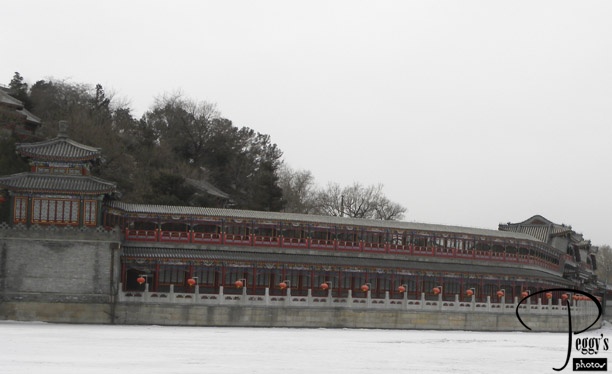
You can see in this photo part of the Long Corridor below the hill where the dogoda is.

BeiHai Park
BeiHai Park
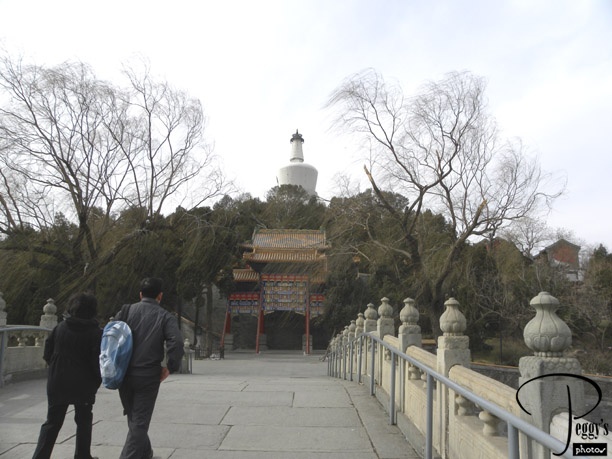
The YongAn bridge to the island. Len and Saieu climbed up the hill to the dogoda. I walked around the Long Corridor.

BeiHai Park
BeiHai Park
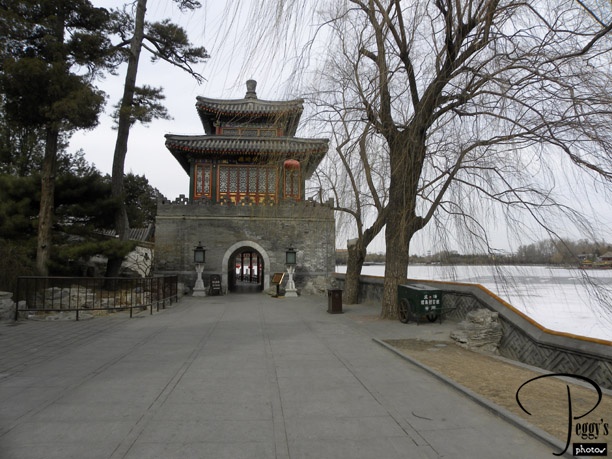
The gate to the Long Corridor.

BeiHai Park
BeiHai Park
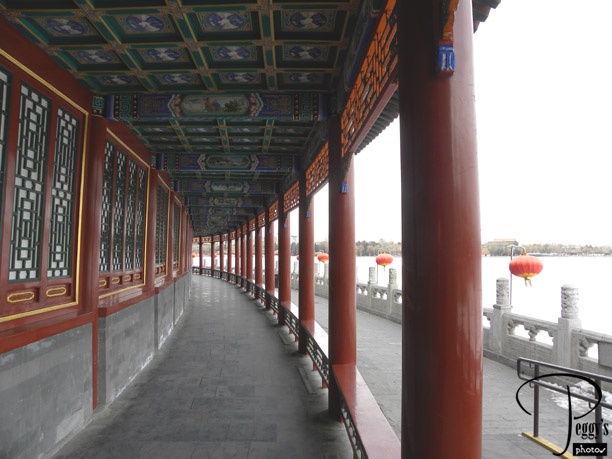
The Long Corridor, with decorated sides, beams, and ceiling, much like the one at the Summer Palace.

BeiHai Park
BeiHai Park
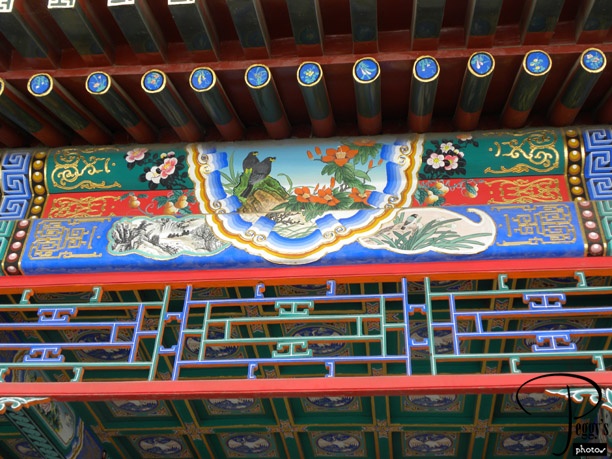
I had much fun taking photos of some of the great art work.

BeiHai Park
BeiHai Park
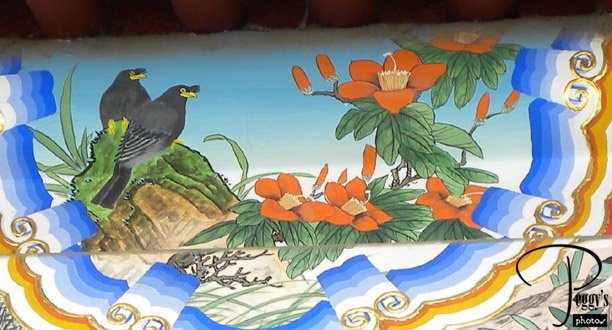
Close–up.

BeiHai Park
BeiHai Park
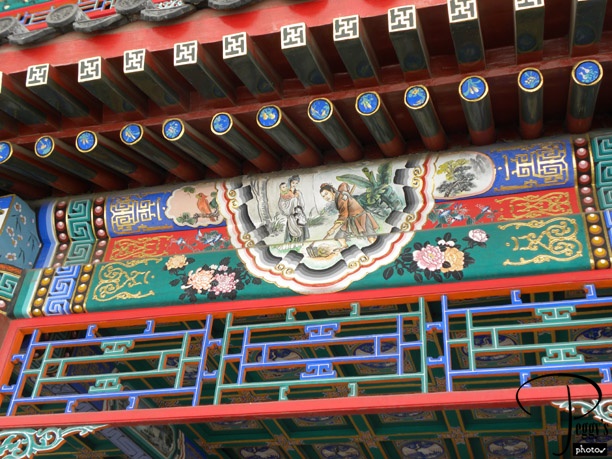
More artwork.

BeiHai Park
BeiHai Park
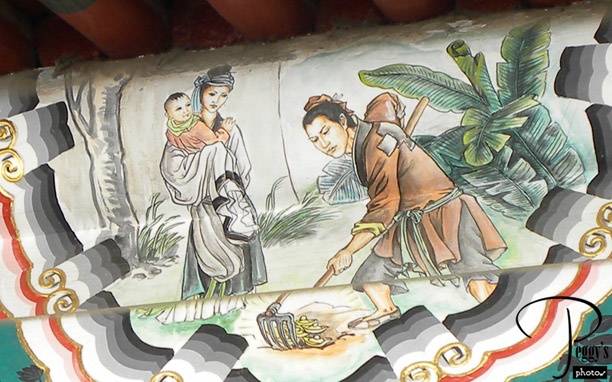
Close–up.

BeiHai Park
BeiHai Park
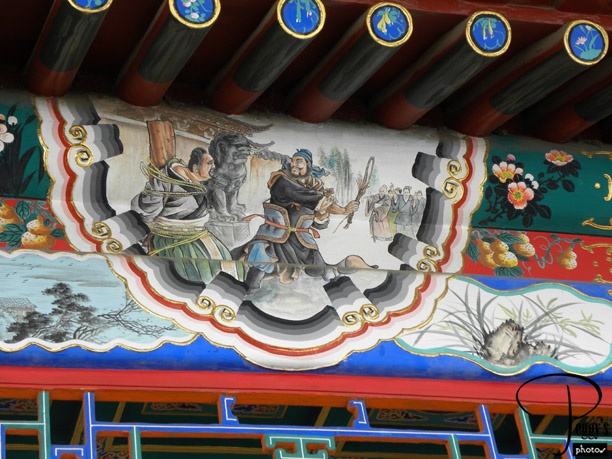
My favorite.

BeiHai Park
BeiHai Park
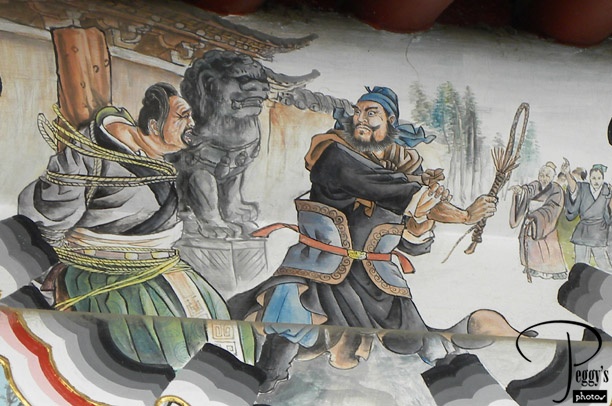
Close–up.

BeiHai Park
BeiHai Park
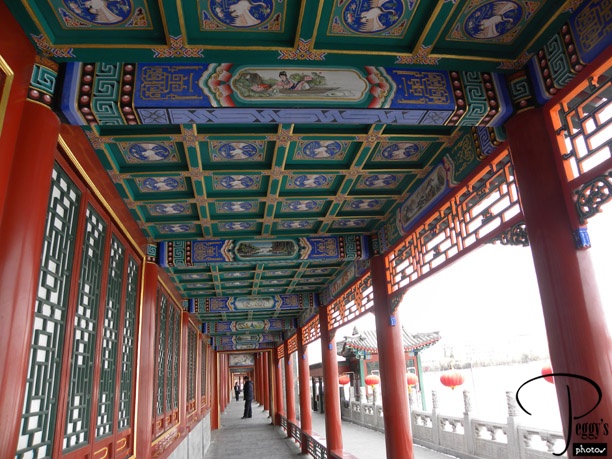
More artwork on the beams.

BeiHai Park
BeiHai Park
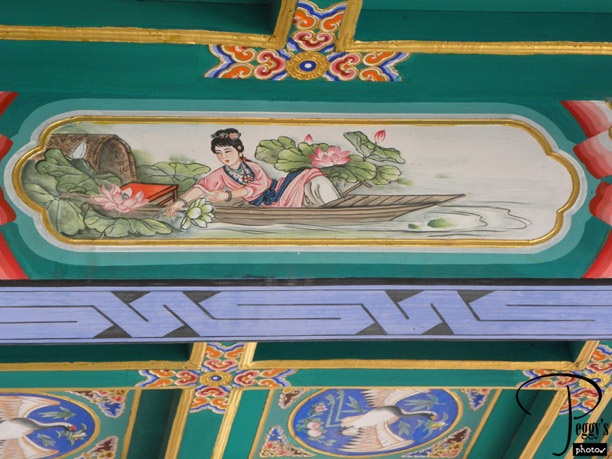
Artwork.

BeiHai Park
BeiHai Park
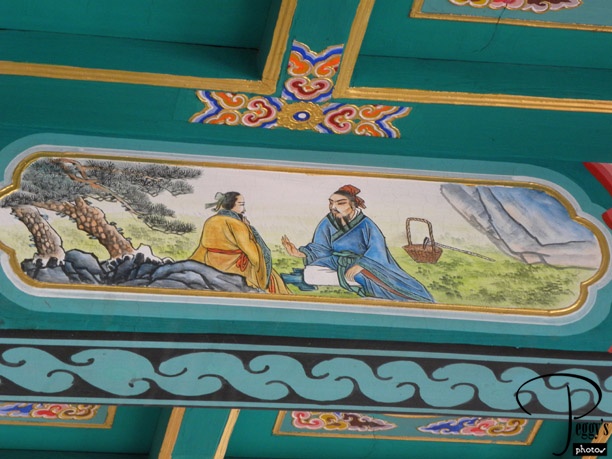
More artwork.

BeiHai Park
BeiHai Park
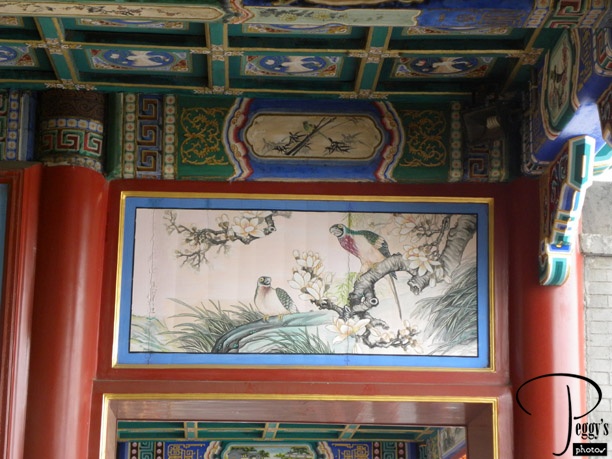
Space was found for even more artwork.

BeiHai Park
BeiHai Park
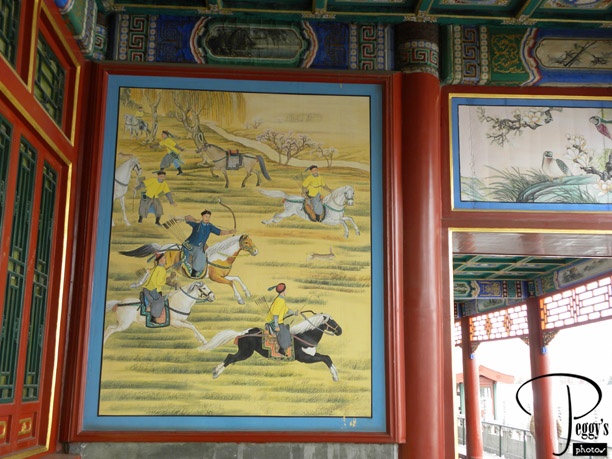
And this as well.

BeiHai Park
BeiHai Park
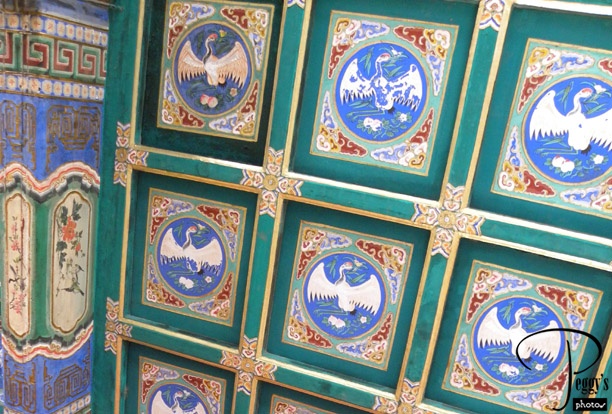
On the ceiling.

BeiHai Park
BeiHai Park
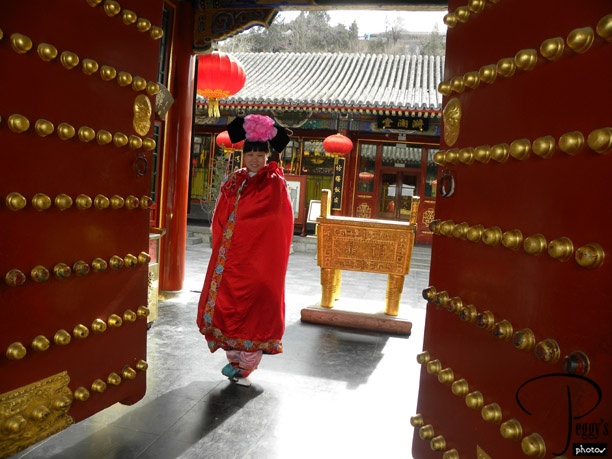
In the middle of the Long Corridor was the five–star Fangshan (Imitation Imperial) Restaurant, serving “royal style dishes.” We checked the prices and decided to eat lunch elsewhere.

BeiHai Park
Outside BeiHai Park
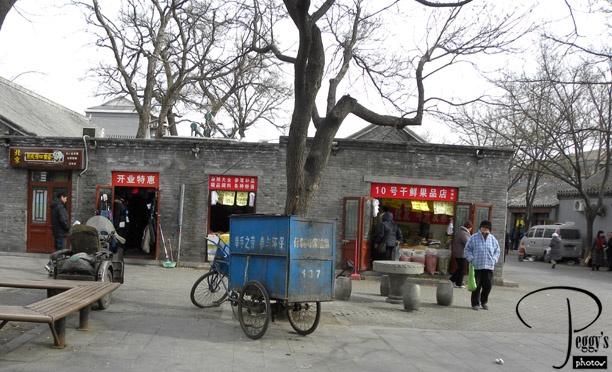
We walked through the east exit of the park and came upon these stores.

Outside BeiHai Park
Outside BeiHai Park
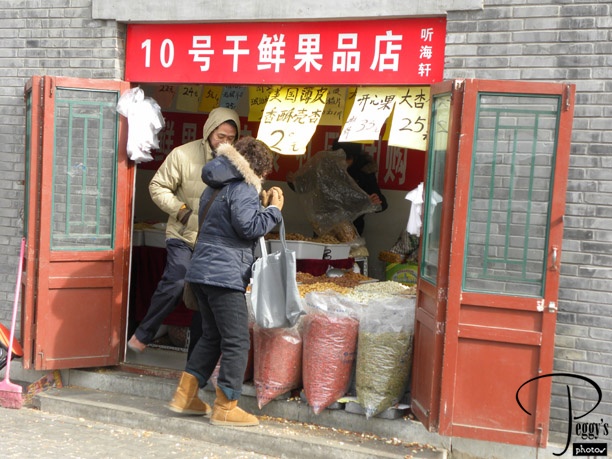
Store selling beans and nuts.

Outside BeiHai Park
Outside BeiHai Park
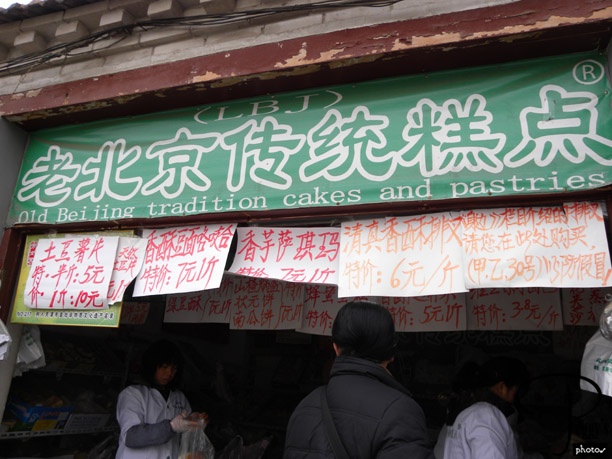
A Chinese Muslim bakery––note the green banner.

Outside BeiHai Park
Outside BeiHai Park
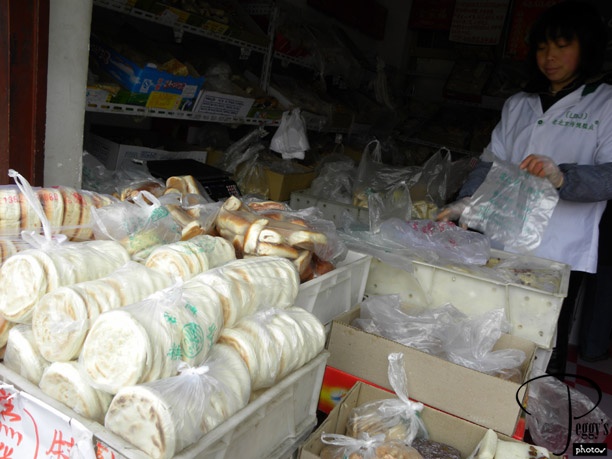
For sale at the bakery.

Outside BeiHai Park
Outside BeiHai Park
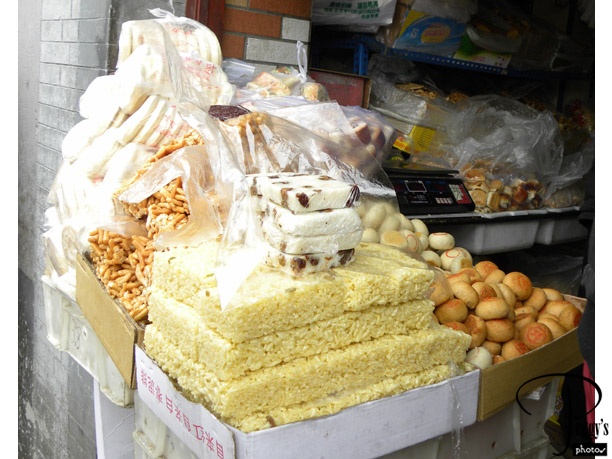
Also for sale at the bakery.

Outside BeiHai Park
Outside BeiHai Park
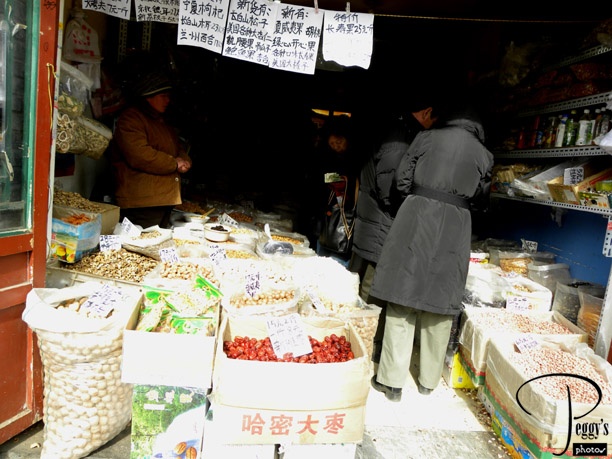
More beans, grains, and nuts for sale.

Outside BeiHai Park
Outside BeiHai Park
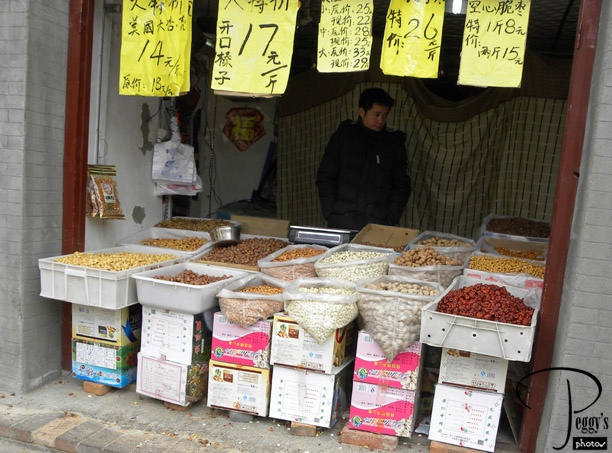
And more.

Outside BeiHai Park
Outside BeiHai Park
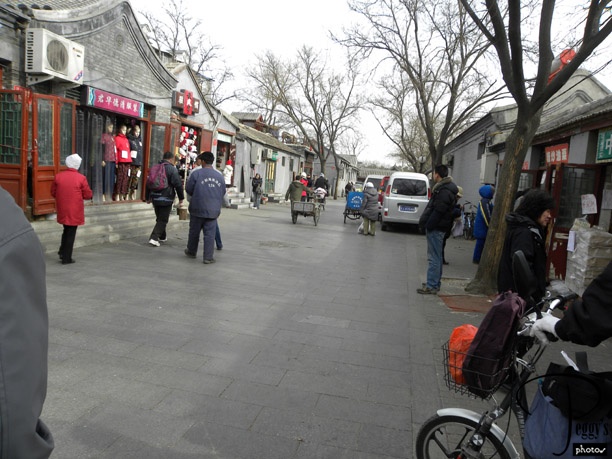
The shopping street.

Outside BeiHai Park
Outside BeiHai Park
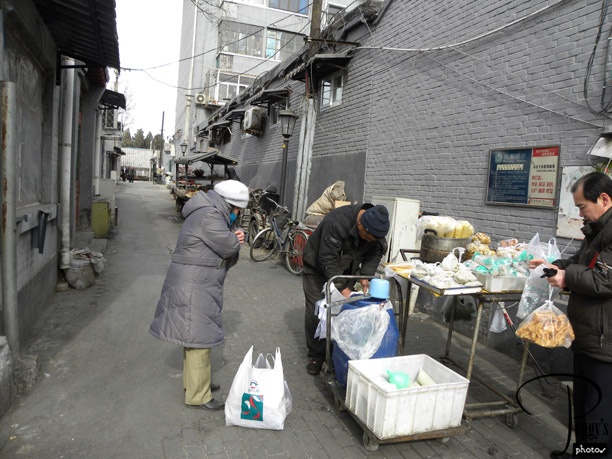
Alleyway vendor.

Outside BeiHai Park
Outside BeiHai Park
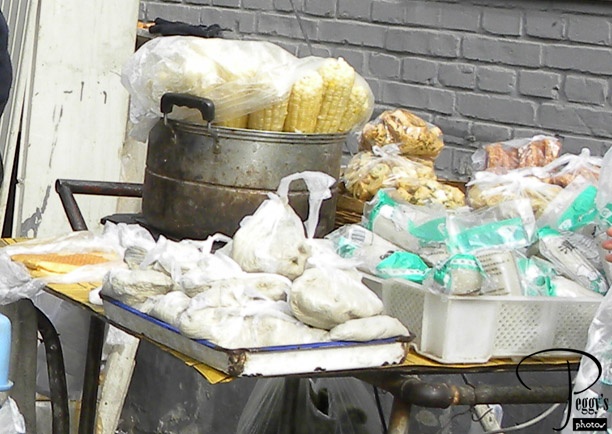
Close–up of the vendor’s items for sale.

Outside BeiHai Park
Outside BeiHai Park
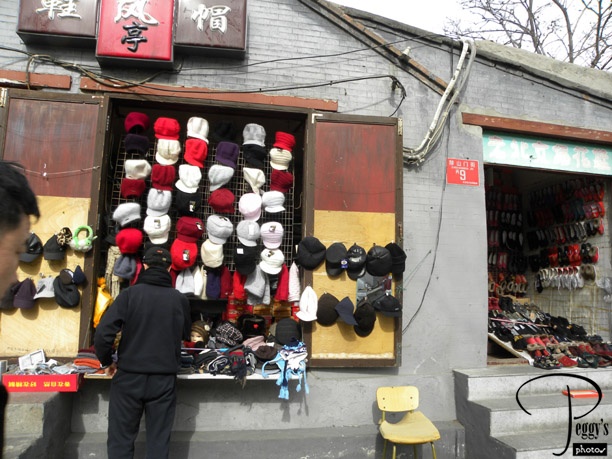
Hats for sale.

Outside BeiHai Park
Outside BeiHai Park
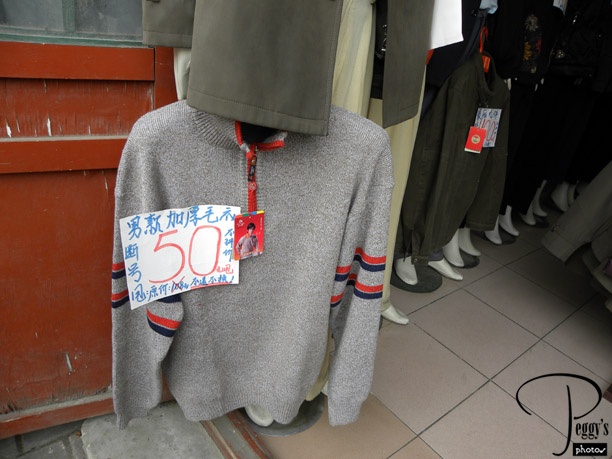
Sweater for sale at 50 yuan ($7.50). Remember that you can bargain the price down.

Outside BeiHai Park
Outside BeiHai Park
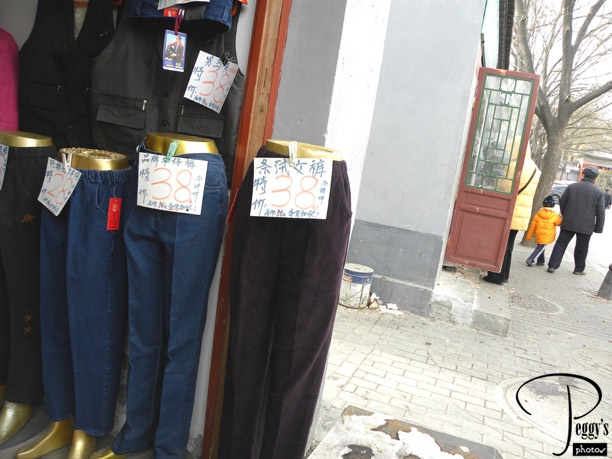
Pants for sale at $4.20 to $5.70. We ate at the restaurant where the door is open in the photo: sweet and sour duck (oh, this was so good. The sides were crunchy, so maybe it was fried), fried rice with pork, tofu (I didn’t eat this), and tea. 97 yuan for three meals or $4.85 each.

Outside BeiHai Park
Outside BeiHai Park
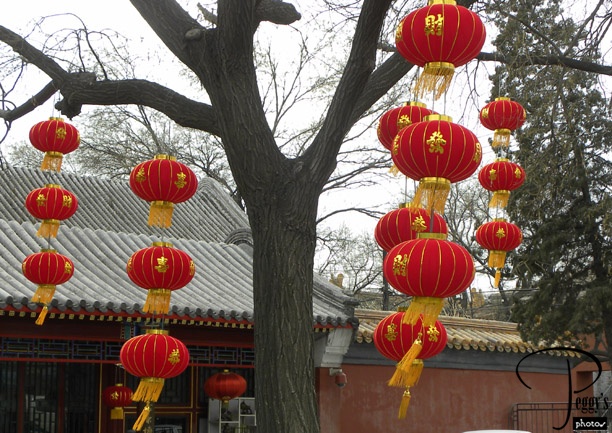
Chinese lanterns hanging from a tree, swaying in the wind.

Outside BeiHai Park
Jingshan Park
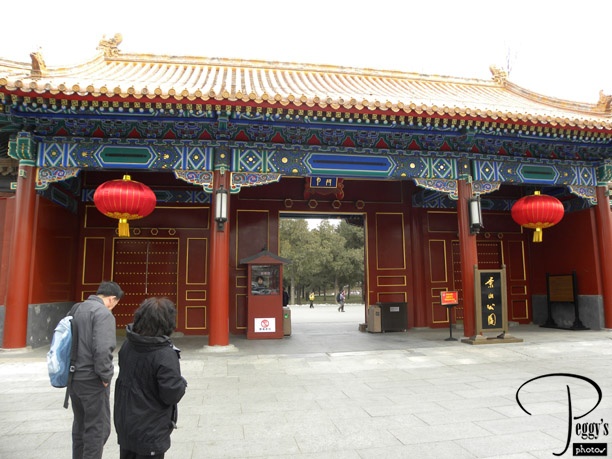
We crossed the street into Jingshan Park. Free entrance.

Jingshan Park
Jingshan Park
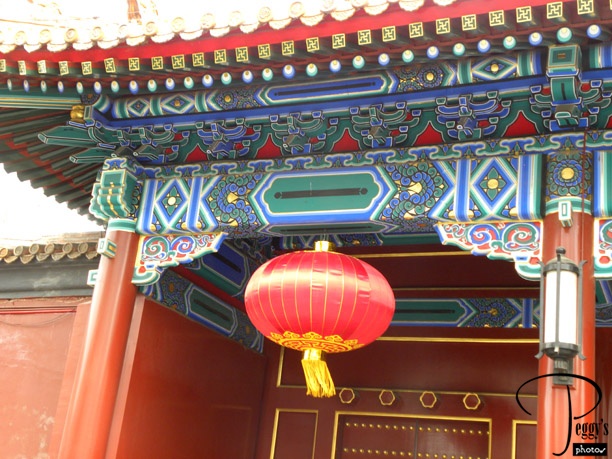
Close–up of the gate.

Jingshan Park
Jingshan Park
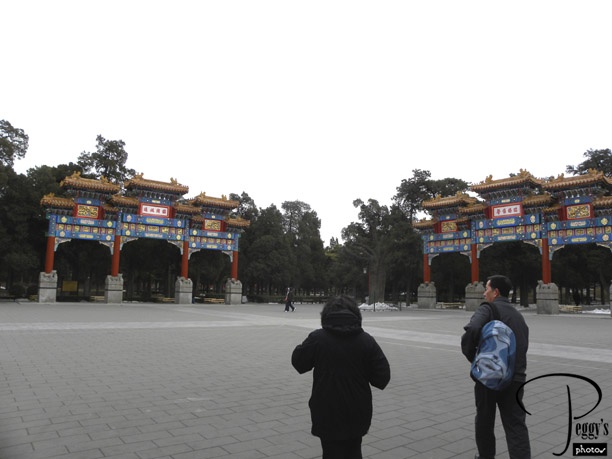
Inside the park. Jinghan Park was originally part of the Forbidden City. It is directly north of it. In 1900, some of its walls were removed to allow for a road between the Forbidden City and the park.

Jingshan Park
Jingshan Park
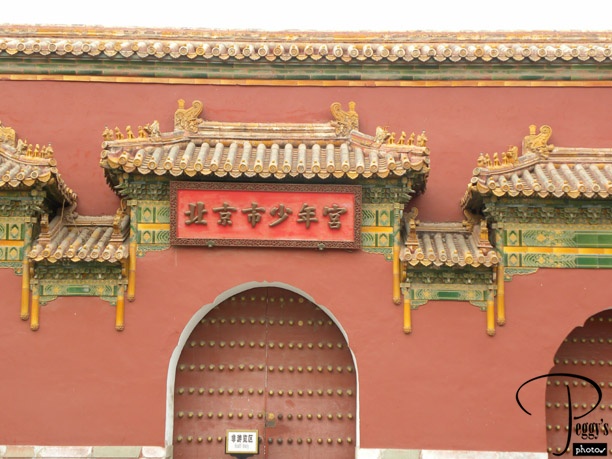
Another gate with closed doors. You seldom see the doors in a closed position––very pretty.

Jingshan Park
Jingshan Park
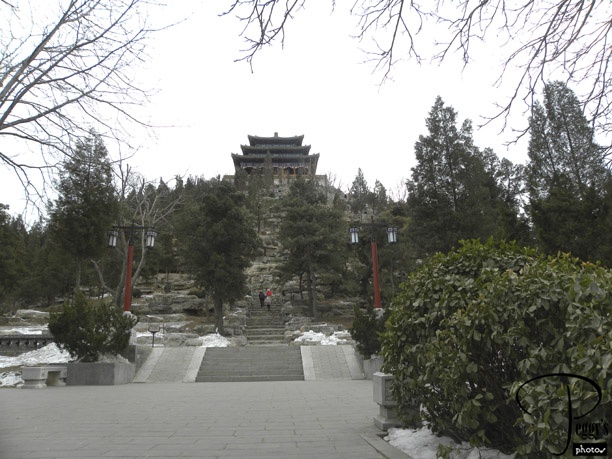
The Pavilion of Everylasting Spring on top of the hill.

Jingshan Park
Jingshan Park
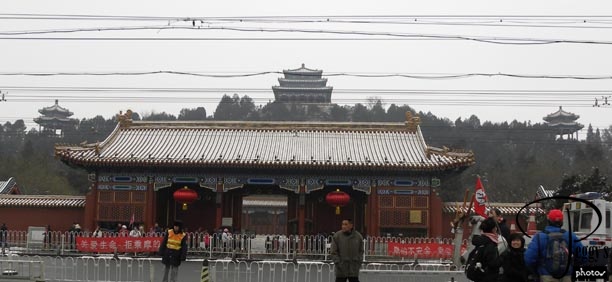
This is the pavilion we saw from the Forbidden City in this photo taken at the Forbidden City.

Jingshan Park
Jingshan Park

Close–up of the Pavilion of Everlasting Spring.

Jingshan Park
Jingshan Park
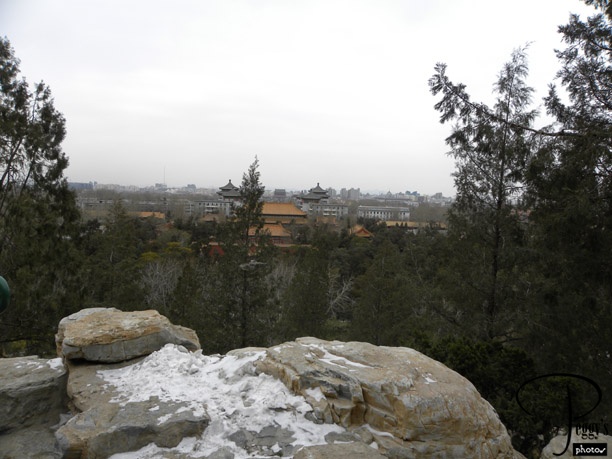
You have to climb up many steep steps to get to the top of the hill. I made it about halfway up. What I really wanted was a photo of the Forbidden City below the hill. I got one, so I was pleased. Leng and Saieu made it to the top and said it was well worth the climb.

Jingshan Park
Jingshan Park
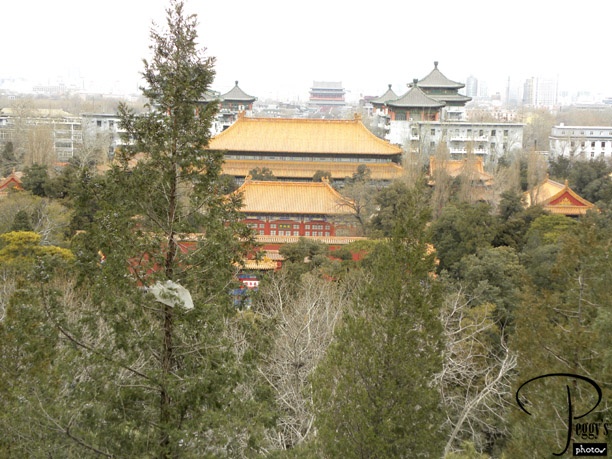
A closer–up of the Forbidden City. The higher you climb, the more extensive photo of the Forbidden City you will get.

Jingshan Park
Jingshan Park
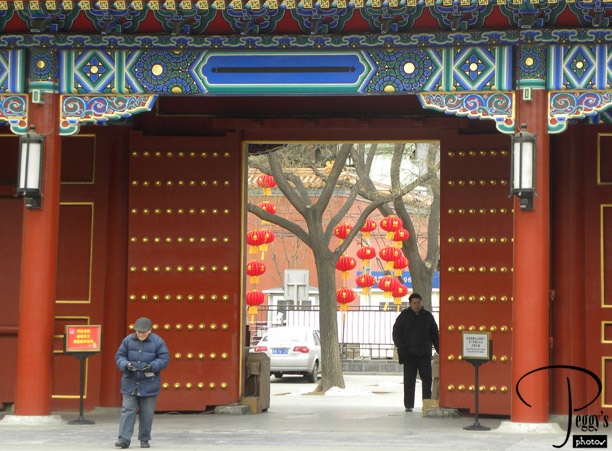
On our way out of Jingshan Park.

Jingshan Park
Jingshan Park
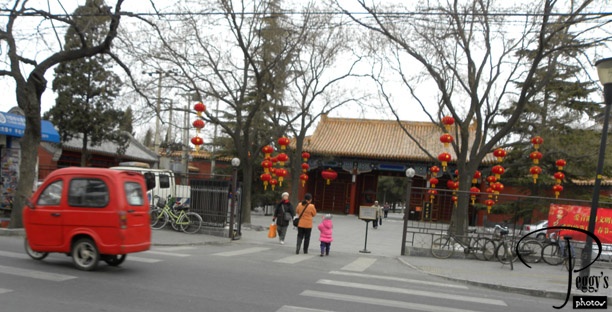
We waited on one side of the street to catch a taxi and waited and waited. Many taxis drove by but they all had passengers. After 20 minutes, we crossed the street and waited there for about another 10 minutes before an empty taxi pulled up. The three–wheel car in the photo: We didn’t see many of these in Beijing but did in Xian, our next city. Time for a nice nap at the hotel, then ate a BLT at the hotel restaurant (comfort American food!). We had to pack tonight as we were leaving Beijing tomorrow.
